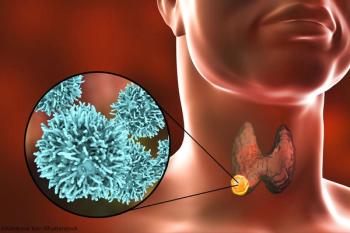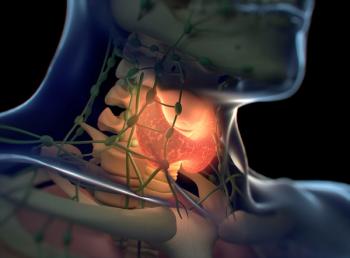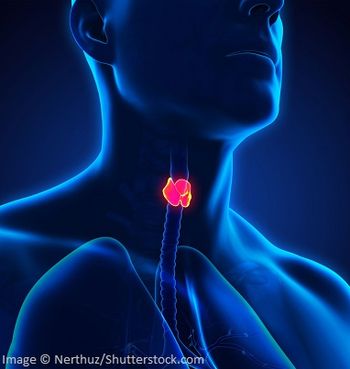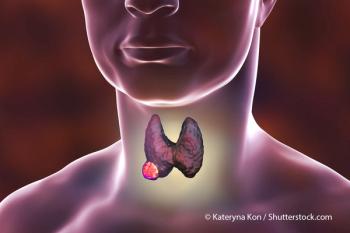
Observed Small Papillary Carcinomas Unlikely to Grow in First 5 Years
Only a small percentage of patients undergoing active surveillance for papillary thyroid carcinoma will experience increases in tumor diameter by 3 mm or more during the first 5 years of surveillance.
Only a small percentage of patients undergoing active surveillance for papillary thyroid carcinoma (PTC) will experience increases in tumor diameter by 3 mm or more during the first 5 years of surveillance, according to the results of a study
The study described the kinetics of PTC tumor growth in a cohort of 291 patients undergoing active surveillance for low-risk disease using serial tumor measurements via ultrasonography.
“As the number of small, incidentally detected PTCs continues to increase, new approaches are needed to avoid overtreatment of tumors that would otherwise remain indolent and asymptomatic while identifying the small percentage of such tumors that will continue to grow,” wrote researcher R. Michael Tuttle, MD, of Memorial Sloan Kettering Cancer Center in New York, and colleagues. “Because PTCs appear to follow predictable growth kinetics under active surveillance, serial measurements of tumor volume hold significant promise in triaging patients to observation vs surgery.”
Patients in the study were followed for a median of 25 months. The majority of patients had tumors that were 1 cm or smaller (79.7%). Less than 5% of patients were considered to be ideal candidates for observation, meeting requirements that included age greater than 60 years and solitary papillary microcarcinoma within an otherwise normal thyroid gland. However, most patients were considered appropriate for observation.
During follow-up, 3.8% of patients had a tumor diameter growth of 3 mm or more. The cumulative incidence of growth of 3 mm or more was 2.5% at 2 years and 12.1% at 5 years. The cumulative incidence of volume increase greater than 50% was 11.5% at 2 years and 24.8% at 5 years. No regional or distant metastases developed during active surveillance.
The researchers found that a younger age at diagnosis (hazard ratio [HR] per year, 0.92; 95% CI, 0.87–0.98; P = .006) and risk category (HR for inappropriate, 55.17; 95% CI, 9.40–323.19; P < .001) were independently associated with the likelihood of a 3-mm growth in diameter.
In addition, patients aged 50 or younger had almost five times the risk for experiencing tumor growth compared with patients older than 50 (27.3% vs 4.6%; P = .03).
“There is little doubt that the success of our active surveillance management program depends on the availability of specialized and highly skilled radiologists who are an integral part of our thyroid cancer disease management team,” the researchers wrote.
In an editorial
“Arguably, some may offer the concern that potentially all tumors may start at a very small size, yet there are patients who continue to die of thyroid cancer. Tumor growth, either in 1 dimension or by volume, may be too rudimentary of a marker to provide the comfort level ultimately desired for a lifetime of active surveillance for all patients,” Scharpf wrote. “Further discovery of new prognostic and predictive markers to guide personalized care will hopefully result in better results and a decrease in potential overtreatment.”
Newsletter
Stay up to date on recent advances in the multidisciplinary approach to cancer.
































































































